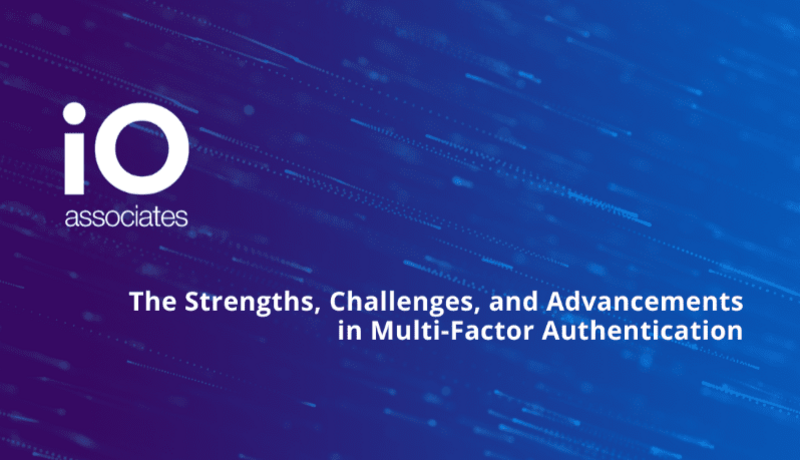The Strengths, Challenges, and Advancements in Multi-Factor Authentication
Posted-on July 2024 By James Lesniak

Today, we’re exploring Multi-Factor Authentication or MFA, an increasingly important device in the cyber security digital world.
If you’ve ever been prompted to enter a code sent to your phone after typing in your password, you’ve used MFA. While it might seem like an extra step, it’s a crucial part of keeping our online accounts safe. Let’s explore what’s new in MFA, why it’s beneficial, and some recent challenges it faces.
The Evolution of MFA
+ Multi-Factor Authentication has significantly evolved over the years. Initially, it was all about something you know (like a password) and something you have (like a phone or a token). Now, it’s also about something you are, thanks to the rise of biometric authentication. Using your fingerprint, facial recognition, or even an iris scan to log in offers a high level of security because these physical traits are unique to you and difficult to replicate.
+ Another exciting development is behavioral biometrics. Instead of relying solely on physical traits, this technology analyzes patterns in your behavior, such as how you type or move your mouse. It provides continuous security checks throughout your session, not just at the initial login. However, this method requires extensive data processing and can sometimes result in false positives, making it less fool-proof than it sounds.
+ Hardware tokens, like USB keys or smart cards, are another layer of security. These devices generate a one-time passcode that you must enter along with your password. They offer a tangible and strong layer of protection but can impede on practicality as losing the token or having it damaged can be a hassle.
+ On the other hand, software tokens, which are applications on your smartphone that generate codes or send push notifications, offer a convenient and cost-effective alternative. They leverage devices that users already own, but they can be highly vulnerable to malware and SIM swapping attacks, where an attacker takes control of your phone number. Because of this, it could be considered an inadequate form of MFA to protect highly confidential information.
Challenges in Implementing MFA
Despite these advancements, implementing MFA is not without its challenges. One major hurdle is user resistance. Many people find the extra steps cumbersome and inconvenient. The key to overcoming this is user-friendly implementation. Educating users about the importance of MFA can help them understand why these additional steps are necessary for their security.
Additionally, integrating user-friendly methods such as biometrics or push notifications can provide a smoother experience while maintaining high-security levels.
Another significant challenge is integrating MFA with legacy systems. Many organizations still rely on outdated infrastructure that may not support modern MFA methods. This can make the transition to MFA more difficult and costly. However, gradual integration and the use of middleware solutions can help bridge the gap between legacy systems and advanced MFA technologies. A phased approach will help organizations minimize disruption while upgrading their security protocols.
Lastly, as MFA becomes more widespread, cybercriminals are developing sophisticated methods to bypass these defenses. Techniques such as phishing, social engineering, and man-in-the-middle attacks are increasingly common. Cybercriminals are constantly evolving their tactics to exploit any weaknesses in MFA implementations. Continuous monitoring, user training, and the implementation of multi-layered security strategies are essential to defend against these evolving threats.
Phishing, for example, remains a significant threat. Attackers may trick users into revealing their authentication codes or passwords through deceptive emails or websites. To combat this, organizations need to educate their employees about recognizing phishing attempts and reporting suspicious activities. Implementing additional security layers, such as email filtering and anomaly detection, can also help identify and block phishing attempts before they reach the user.
iO Associates are a specialist cloud and digital technology staffing firm. We support our clients through their SDLC and Cloud Native Journeys and have extensive experience in recruiting the highest calibre of permanent and contract talent across Cloud, Data, Development, CRM and Credit Union technologies.
While Multi-Factor Authentication is a powerful tool in the fight against cyber threats, it’s not without its challenges. Continuous innovation and adaptation are required to stay ahead of cybercriminals. Organizations must balance security needs with user convenience and be prepared to address the complexities of integrating MFA into their existing systems. By doing so, they can enhance their cybersecurity posture and better protect their digital assets.
For more detailed information, check out the Gallagher Re Cyber Focus report and other sources like CSO Online and Security Magazine!
Thank you for reading. Please get in touch today to find out how working with iO can help you reach your goals.
